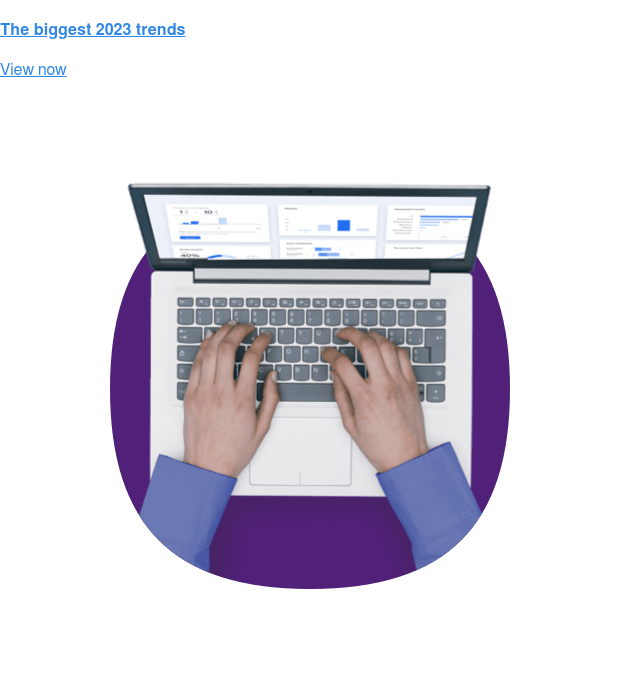When ancient prophecies of world destruction spread in 2012, most people took them with a pinch of salt. But when top scientists move the hands of an established “doomsday clock” closer to midnight, it can be harder to stay hopeful.
People know the earth’s seen better days. While we can’t ignore environmental problems like wildfires or heat waves, it can be tiring to hear the same story told time and time again: that we’re not on track to meet our deadline, and probably won’t. This is where apocalypse fatigue can kick in.
What is apocalypse fatigue?
Resilience defines apocalypse fatigue as “the exhaustion of having to make endless moral choices when they don’t seem to make a difference”.
Consumers stand to benefit from seeing alternate endings to climate change and believing that government targets are an achievable team effort, rather than a final warning to individuals or businesses. For that to happen, brands need to help make eco narratives less apocalyptic, especially with inflation and other crises burning on in our minds.
Disaster prophecies have picked up in recent years
If someone were to ask whether you cared about the environment, chances are you’d say “yes, of course”. We’d be surprised by anyone who didn’t.
But when you ask millions of consumers whether they care about the planet on an ongoing basis, that’s when you start to see the bigger picture.

The number of people who say helping the environment is important to them has dropped in pretty much all of our tracked markets since 2020, and the most across Europe – where you’ll find some of the countries least threatened by climate change at the moment.
This time last year, Americans were the most likely across 11 markets to say climate change has had no impact on them personally, with Brits close behind. Meanwhile, #climatedoomism – the idea that humanity won’t survive anyway – is largely a Western trend, one that arguably absolves people of responsibility.
This disaster prophecy makes our grounds for revamping the way we talk about global warming even stronger.
What’s more, the environment’s perceived importance is just one of many sustainability-related trend lines pointing down, including recycling, calls for brands to be eco-friendly, and willingness to pay for green products. And we’re seeing these patterns emerge among kids too.
There are various explanations for this. To start with, ESG has come under fire from many directions, and the idea that consumers should do “the heavy lifting” on climate change has been repeatedly challenged.
But, on the whole, it’s not that people are suddenly less concerned about our planet; it’s more that they don’t have the financial means or emotional headspace to focus on it. Life’s difficult enough right now, and it can’t all be doom and gloom.
Sustainability shouldn’t cost the earth
If you’re worried about paying next month’s bills, climate change probably isn’t front of mind.
It’s safe to say that inflation’s contributing toward climate fatigue, with many people’s outgoings taking up an increasingly bigger share of their income, and sustainability looking more like a luxury.
In fact, those with low purchasing power are much less likely to prioritize sustainability when picking food, household products, and energy suppliers compared to a year ago – and compared to those with more disposable income.

But we shouldn’t stop at our bank balance. Many of the drops in sustainability attitudes we outlined above date back to 2021, a time when many countries had record savings due to consumers staying indoors or putting financial aid aside.
Pent-up demand is another thing to consider. Alongside these eco-related drops, we’ve seen a steady rise in Americans’ willingness to buy things they couldn’t otherwise afford using credit.
And holidays show the relationship between higher pent-up demand and less eco action more clearly. Since lockdowns, we’ve seen consistent growth in the number of consumers saying they’ve bought a vacation abroad in the last 3-6 months, and in the number planning to buy one.
In countries like Canada, Portugal, and France, intent to buy international breaks is now higher than it was in 2019.
It’s also on par with pre-pandemic figures in the United States, which is possibly why Americans’ concern about the environmental impact of travel has dropped by 11% in the latest wave, and is at its lowest point since we started tracking it.
The cost of eco-friendly items is the main barrier to purchasing them, and many people currently have an “either/or” mindset, with sustainability often losing out to something they weren’t able to buy in 2020, or wouldn’t be able to if they were to buy green.
A workaround for brands is to spotlight cost-cutting behaviors that have a positive impact on the environment.
While reusable coffee cups were a Covid casualty in some places, Starbucks reported a big rise in usage when it introduced a small fee for disposable ones back in 2018. And looking ahead, MAC expects to collect up to 500,000 kilos in packaging each year off the back of its takeback program, which offers freebies in exchange for taking part.
News and apocalypse fatigue go hand in hand
Take a moment to mentally list all the films you can about climate change; The Day After Tomorrow, Interstellar, or WALL-E might come to mind. Whatever you’re thinking of, it’s probably some kind of doomsday narrative based on a global warming disaster.
Some commentators feel we need a “more varied portrayal of climate change in film”, and the same lesson can be applied to the media.
Just like optimism toward the environment, engagement with news channels peaked in Q2 2020, as we all sought to keep up with what was happening Covid-wise.
Since then, news updates have centered around fresh strains of the virus, war, superpower tensions, the energy crisis, and inflation – with all these things happening alongside climate disruption.
Humans may have a negativity bias, but we can only take so much before switching off.
And this is what seems to have happened. Since Q2 2020, there’s been a 10% drop in consumers citing an interest in what’s going on in the world, and an even sharper fall in those saying they post opinions about environmental issues.

Reading and engaging less with crisis communications might be something some people have done without realizing. But in many cases, it’s been a conscious decision.
Americans have identified news/current events as one of the main contributors to society’s poor mental health, and 41% of those who believe social media damages their wellbeing say they often feel hopeless about the state of the world while using it.
According to writer Rebecca Solnit, “every crisis is in part a storytelling crisis”, and it’s clear that global warming-based reports and films need to cool down in order for consumers to really engage with climate issues.
The effects of climate communication so far
So, if we were to tweak our approach to climate storytelling, where are we starting from?
Our past research gives us a benchmark.
In August 2022, we asked people if they were optimistic that progress is being made on climate change. Less than 1 in 3 Westerners agreed. And at the end of 2021, around half here thought it unlikely that the pledge to limit global temperature increases to “well below 2 degrees Celsius” will be achieved.
Generally speaking, people aren’t hopeful about the earth’s future, and many are cynical about climate targets.
To be clear, fear can motivate people to act. Americans who worry about climate change are more likely to recycle than average, for example.
But hope tends to be more energizing. Those predicting the environment will get better in the near future are significantly more likely to say they typically buy eco-friendly products than those expecting it to get worse – despite the fact that the former skew toward the low end of the income spectrum.
And other studies also show that fear can wear us down, particularly when we don’t have clear instructions on how to act.
Less talk about carbon emissions, more about mankind
Going forward, here are some data-driven thoughts on containing apocalypse fatigue.
For starters, solutions-based, high-quality journalism motivates people. The publishing sector could showcase more success stories and innovation, proving that it’s possible to make a difference.
Fact-checking is also very important. Consumers often see climate messaging as less trustworthy than other categories, with over half of Americans saying they’re concerned about “greenwashing” in ads. Ensuring there’s no miscommunication between marketers, news writers, and academics will lower the chances of a slip up.
Next, don’t be boring. Climate science isn’t always digestible or presented in human terms.
People don’t want scary stats, they want to see themselves reflected in everyday stories.
Americans most want to see real people or individuals featured in ads that reference sustainability, ahead of scientists, CEOs, and actors; holding a mirror to their lives will give them a personalized reason to act.
Communications also shouldn’t be left to a climate scientist or economist; companies should collaborate with creative industries to create compelling narratives – not just doomsday ones.
Just as the plant-based sector is trying to rebrand and move away from being seen as serious or self-righteous, climate experts should aim to make their content more laid-back and approachable. Netflix’s Cunk on Earth mockumentary is a great example of how factual information can be communicated through comedy.
Apocalypse fatigue: Making positive action more sustainable
While they collectively make a big difference, consumer choices alone can’t solve the climate crisis.
They shouldn’t set the sustainability agenda, especially with many people unsure on whether simple actions are enough to turn back the clock, and doomism rising to become the leading climate myth globally.
It’s up to brands to make large-scale changes, work with publishers and fans to inspire others, and re-energize the climate conversation.









